
Seven Earn NSF Early Career Awards
Nebraska researchers are answering longstanding questions about turbulence, unlocking the potential of RNA, analyzing Title IX implementation, developing a nanosized disease detector and more with Faculty Early Career Development Program awards from the National Science Foundation. In 2022, seven Nebraska faculty received the prestigious five-year grants supporting outstanding pre-tenure faculty, totaling nearly $4.3 million.
Better Understanding RNA
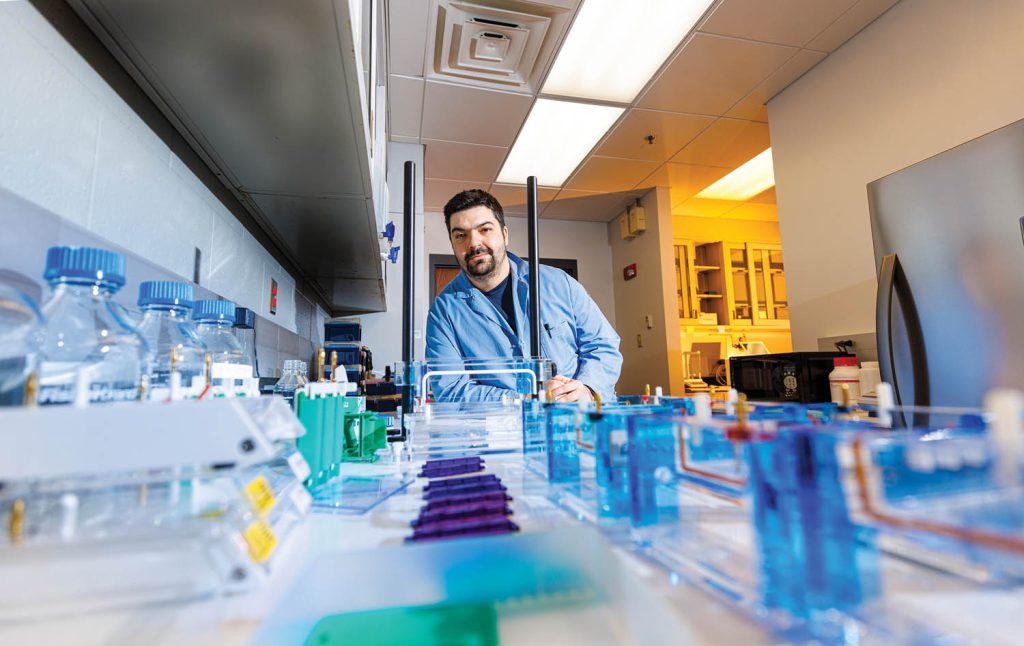
RNA is emerging from DNA’s shadow as a vital biological force with great potential to benefit human health and advance technology. Nebraska’s Joseph Yesselman is developing a first-of-its-kind tool to help scientists better understand RNA structure.
He’s using a $1.2 million CAREER award to develop a computational model to reliably predict RNA’s capacity to form tertiary contacts: connections that enable RNA to fold into the complex 3D structures that dictate their biological relevance.
Tertiary connections form only under two conditions. An RNA strand must have specific types of structural components, called motifs, and it must be flexible enough to bend and unite these motifs.
The model will predict which RNAs check both boxes, helping scientists understand the fundamental RNAs inside cells and guiding development of new, stable RNAs for biotechnology, research and medicine. It will shed light on how to quell RNA viruses like influenza, COVID-19 and Zika.
To engage the public, Yesselman, assistant professor of chemistry, is launching RNA design challenges through an online video game platform. He’s also developing a course for Husker students using video games to introduce molecular design concepts.
“You can make things fun, and people can learn at the same time. I think this whole movement of gamifying knowledge is really powerful.”
Nebraska news release: Yesselman creating model to study RNA, gamify scientific learning
Boosting Crops’ Cold Tolerance
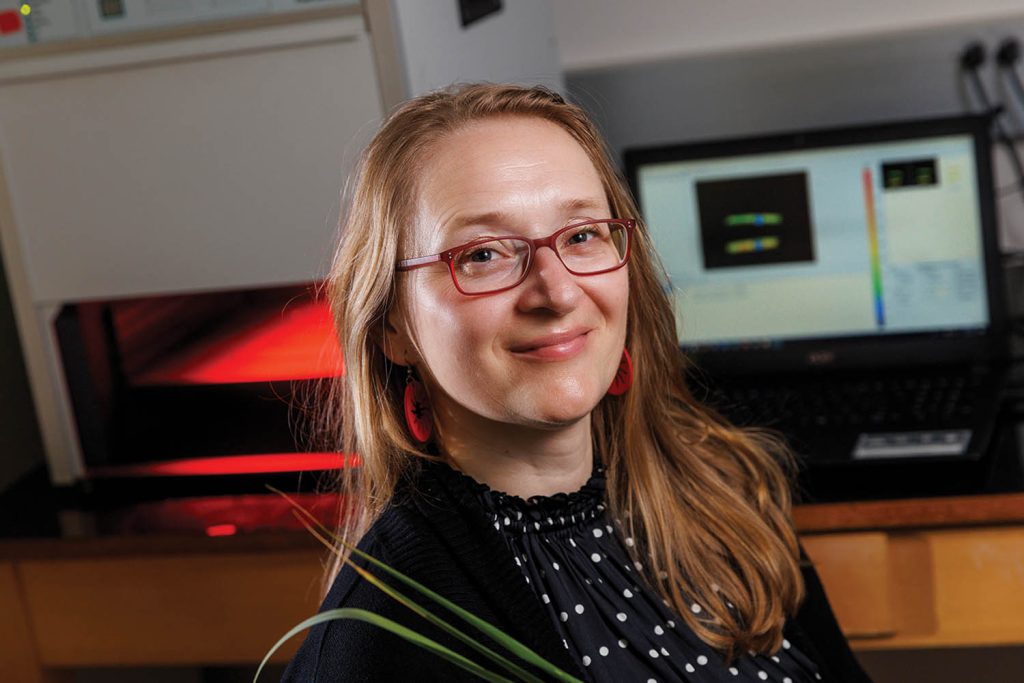
Katarzyna Glowacka is using a nearly $1.4 million CAREER grant to investigate a mechanism that could enhance the cold tolerance of corn, sorghum and sugarcane.
These crops use the same type of photosynthesis as their close cousin, miscanthus, a large perennial grass. Unlike the others, miscanthus survives and thrives at low temperatures.
If corn, sorghum and sugarcane were similarly fortified against cold, they could be planted earlier in the spring, enabling them to mature before summer droughts and survive in a broader range of climates.
Glowacka, assistant professor of biochemistry, thinks miscanthus’ cold resistance stems from its unique regulation of non-photochemical quenching. This process enables plants to convert excess solar energy into heat instead of letting it cause damage. Glowacka’s preliminary data show that in miscanthus, this process also protects against chilling.
Using a blend of high-throughput phenotyping, genetics approaches and redox metabolomics, Glowacka aims to develop a clearer picture of events that trigger this bolstered defense system. As weather extremes and water scarcity intensify, cold-tolerant crops are increasingly important.
“The goal is to understand the protective mechanism and develop some guidance toward developing more chilling-tolerant corn, sugarcane and sorghum.”
Nebraska news release: Glowacka’s research aims to enhance crops’ tolerance to the cold
Expanding Access to Quantum Simulators
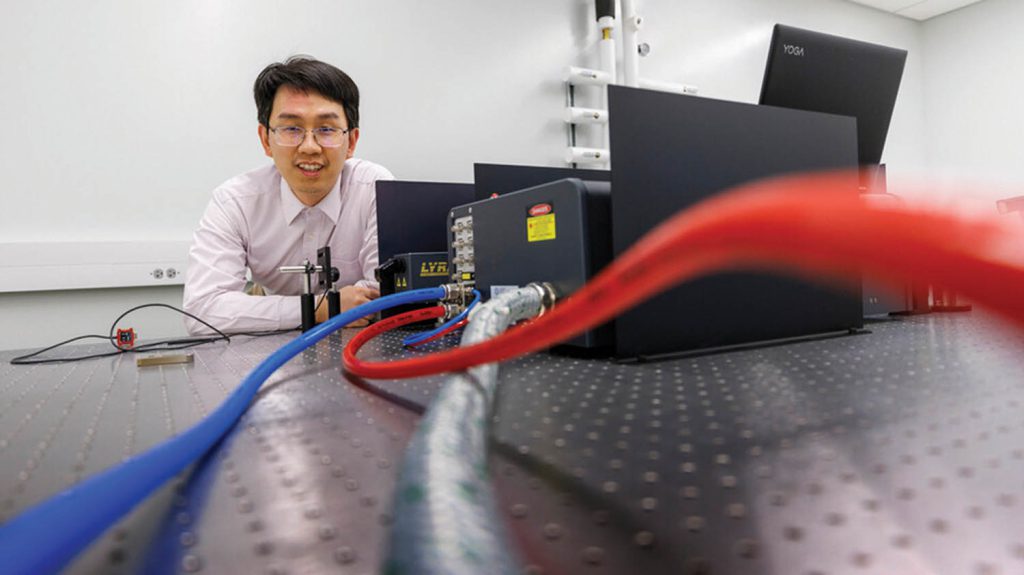
Quantum simulators are key tools in powering the next wave of discoveries based on quantum mechanics, a fundamental physics theory describing nature’s physical properties at the atomic and subatomic levels.
Right now, quantum simulators – devices that shed light on quantum systems or create quantum states of matter – require bulky ultra-low-temperature vacuum systems inaccessible to many research labs.
Husker engineer Wei Bao wants to change that. With a nearly $760,000 CAREER grant, he’s developing simulators that work at room temperature, which would make them far more accessible to researchers.
“This will lower the bar for a lot of researchers to access these quantum simulations,” said Bao, assistant professor of electrical and computer engineering.
To accomplish this, Bao will synthesize novel optical materials and integrate them with photonic structures. Using these room-temperature quantum simulators, he will study the rich, exotic materials properties that previously have been difficult to understand.
The first quantum revolution produced the technology that defines modern life: computers, lasers, telecommunications and more. Bao’s work will advance the second quantum revolution, which is expected to unlock new possibilities in sensors, communication networks and computers.
Nebraska news release: New device gets scientists closer to quantum materials breakthrough
Understanding Cell-cell Junctions
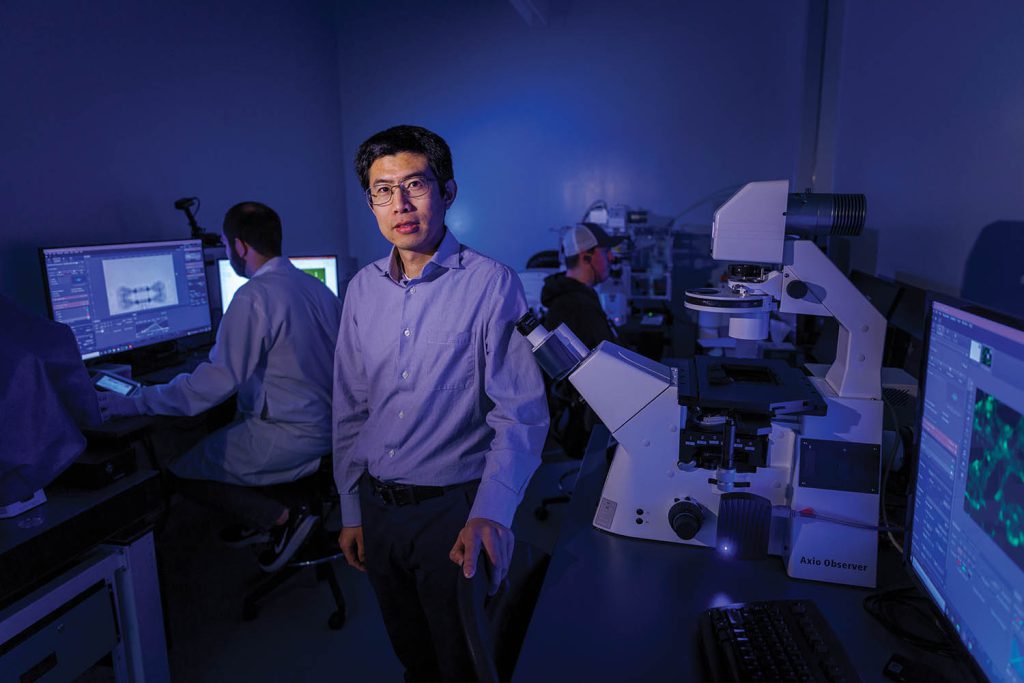
Cell-cell junctions are crucial to human health. These protein structures enable cells to attach to each other, maintain tissue integrity and regulate communication between cells. They face a wide range of daily strains like cardiac pulses, digestion and skin stretching.
Ruiguo Yang, associate professor of mechanical and materials engineering, is using a $540,000 CAREER grant to explore how cell-cell junctions respond to strains of different magnitudes and rates. Better understanding these processes could shed light on the mechanics and potential treatments for diseases like cancer, genetic mutations of the heart and autoimmune skin conditions.
The project builds on Yang’s paradigm-shifting development of a microscopic apparatus that mimics a cell-cell junction’s physiology. The platform is attached to an atomic-force microscope, which replicates strains that junctions face.
Yang is studying what happens when a strain does not rupture a junction, but instead triggers the cell to elongate. He is pinpointing the signals that prompt this adaptation process, called mechanotransduction. He’s also exploring what happens when stress ruptures a junction.
Yang is also discerning how cells and their junctions behave at different sites in the body – the heart versus the skin versus a blood vessel, for example.
Nebraska news release: Yang advancing work on cell-cell junctions and their link to human health
Uncovering Mysteries of Turbulence
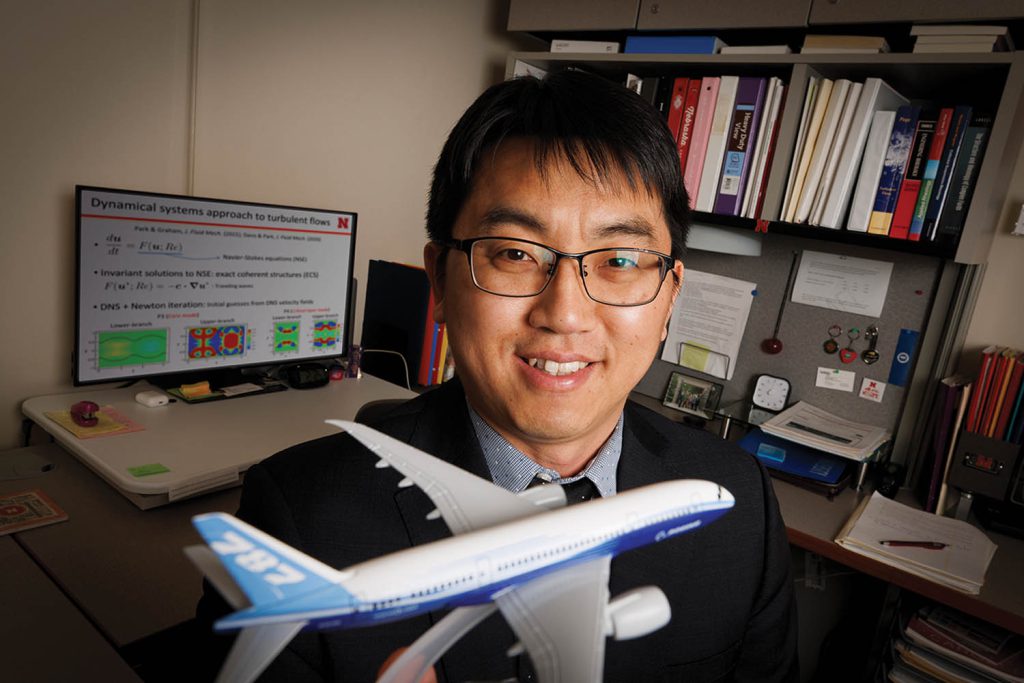
Nebraska engineer Jae Sung Park is working on turbulence – the chaotic motion of a flowing substance like liquid or gas that affects everything from aviation and weather to human blood flow.
Scientists don’t fully understand the rules governing turbulence. With a nearly $509,000 CAREER award, Park is identifying patterns or orders in turbulent flows, then developing methods of exploiting them to mitigate their impact.
“Since turbulence is omnipresent, if we can more accurately predict how, when and where turbulence will happen, its impact would be enormous,” said Park, assistant professor of mechanical and materials engineering. “We could save billions of dollars in energy usage and possibly save lives by predicting cardiovascular or major weather events.”
Park focuses on vortices, the swirls that form when fluid layers mix. He will identify certain vortices that change turbulence, such as speed or directional flow. Using mathematical tools, his team will develop predictive computer models that anticipate the probabilities of where and when turbulence may create a new vortex.
He’s also partnering with the Food Processing Center on Nebraska Innovation Campus to explore how reducing turbulence in piping systems could cut food industry costs.
Nebraska news release: Park aims to understand mysteries of turbulence to save lives, resources
Improving Sexual Violence Reporting
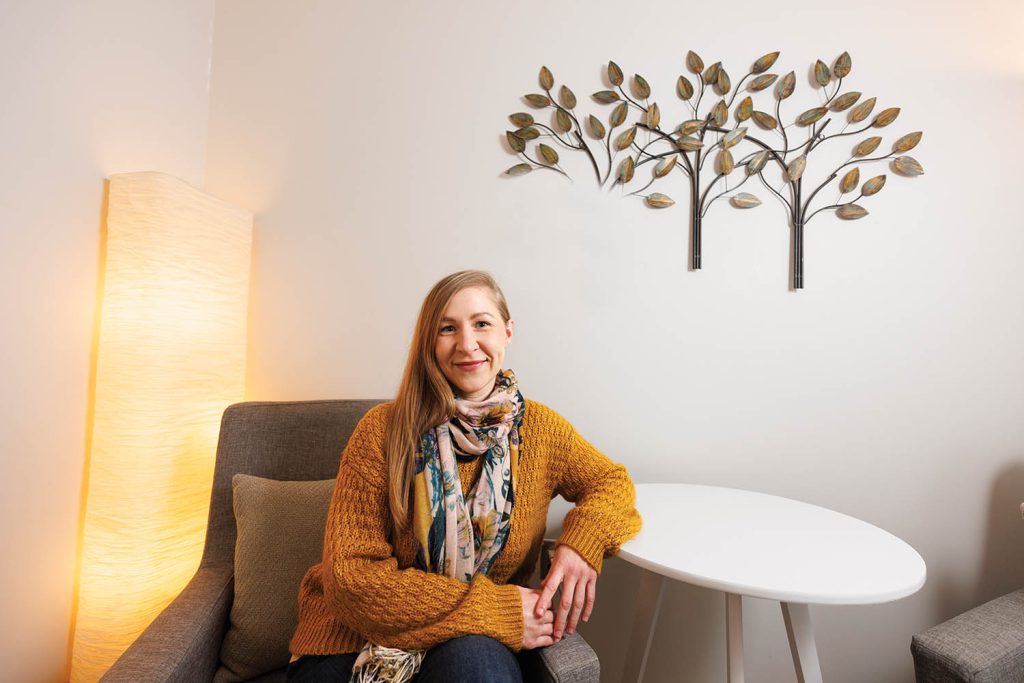
Federal guidelines regarding sexual violence on campus aim to protect people. But sometimes, institutions implement them in ways that don’t align with survivors’ best interests.
Kathryn Holland is using a $500,000 CAREER grant to conduct the first multilevel exploration of mandatory reporting policies, a subset of federal Title IX law. She’ll analyze institutional and individual data at two universities to understand how mandatory reporting policies function in the real world.
“We’ve only started to scratch the surface of the kind of empirical evidence we need to be able to understand these policies, how they’re being implemented and their outcomes,” said Holland, assistant professor of psychology and women’s and gender studies.
In implementing mandatory reporting policies, institutions often require nearly all employees to report information about sexual misconduct to designated officials. But this means names and experiences are sometimes shared against survivors’ wishes, resulting in increased post-traumatic stress.
Holland will study this misalignment by examining the text of university policies and conducting interviews. She’ll integrate this information to show how the federal directives morph as they’re interpreted.
The goal is providing results to help policymakers and advocates develop trauma-informed policies and better support survivors.
Nebraska news release: Holland’s research aims for survivor-first approach to reporting sexual violence
Detecting Disease with Nanosensors
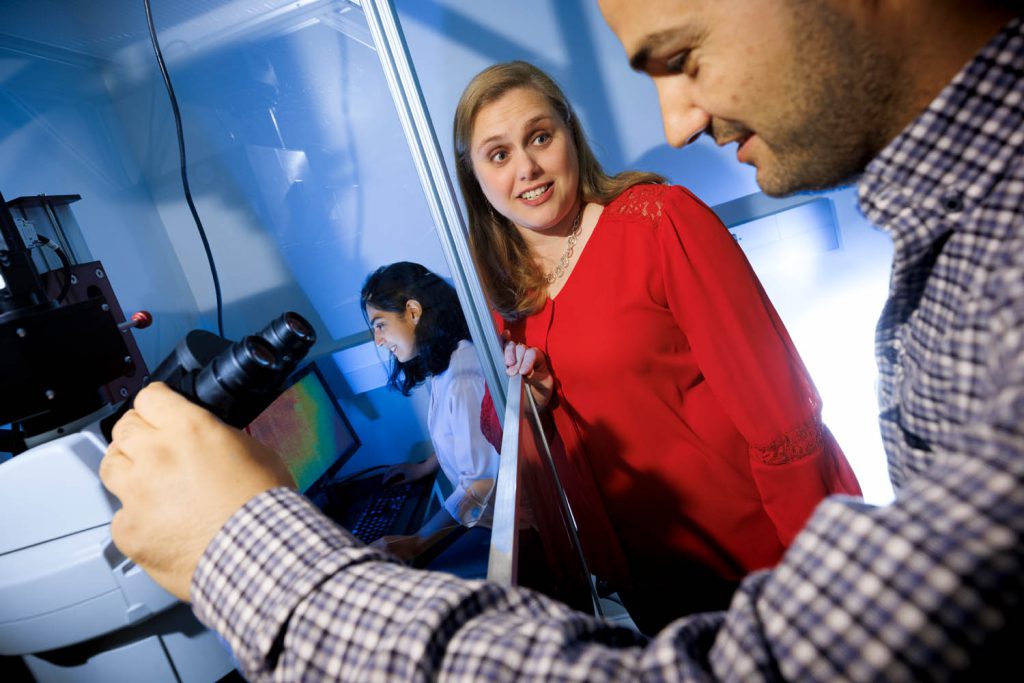
Nitric oxide is a key player in living systems, but scientists don’t fully understand its role in disease development. That’s partially because in less than a millisecond, it degrades in the bloodstream, making it difficult to measure.
Nicole Iverson’s research could help overcome this problem. With a $550,000 CAREER grant, she’s developing an easy-to-use nanosized nitric oxide sensor that could function as a tiny disease detector inside a cell.
Her sensor uses carbon nanotubes shaped like a straw, with a diameter of 1 nanometer – a billionth of a meter. Shining laser light on the tubes emits light initially, but when exposed to nitric oxide, the sensor turns off.
Using these sensors, Iverson is designing a platform that measures concentrations of nitric oxide and hydrogen peroxide, another biologically important molecule.
This technology could provide information about healthy and diseased cells.
“Imagine an insulin sensor for diabetics that could continuously detect what’s going on in their blood. It’s implanted annually, as opposed to a daily finger prick,” said Iverson, associate professor of biological systems engineering. “It could save lives by getting us better information much faster.”
Nebraska news release: Iverson aims to advance study of nanotubes in diagnosing diseases
